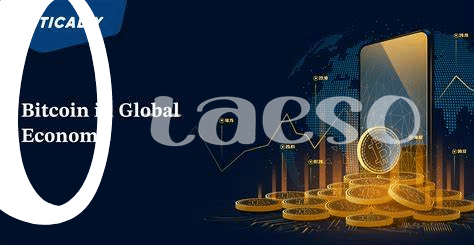What’s Bitcoin, Anyway? 🌐

Imagine a world where every person has access to a kind of digital money that isn’t controlled by any country’s government or bank but works the same everywhere. That’s the magic of Bitcoin. It was created in 2009 as a response to the financial crashes around the world, offering a way to pay and get paid across borders without the need for middlemen or hefty fees. Because it’s digital, you can send Bitcoin to anyone in the world with an internet connection, making it a revolutionary idea in the world of finance. It works using a technology that’s a bit like a digital ledger, recording every transaction in a way that’s secure and can’t be tampered with, thanks to clever coding.
Now, while Bitcoin sounds super complex, it’s pretty straightforward when you break it down. At its heart, Bitcoin is a pile of digital data that people have agreed has value, similar to how we view gold. Everyone keeps track of these transactions in a shared digital space called the blockchain, ensuring that this digital currency remains honest and transparent. Think of it like playing a global game where everyone’s keeping score together, making sure everything’s fair. As we move towards 2024, this digital currency isn’t just a piece of technology from the future; it’s here now, reshaping how we think about money every day.
| Year | Bitcoin’s Remarkable Moments |
|---|---|
| 2009 | Birth of Bitcoin |
| 2024 (Predicted) | A pivotal year for digital currency adoption |
The High Cost of Sending Money Overseas 💸
Sending money across borders has long been a pricey affair, with fees munching away at the hard-earned cash meant for loved ones or crucial investments. Imagine working miles away from home, only to find a significant portion of your money vanishes in the process of sending it back. Traditional banks and money transfer services often tag on steep charges, not just in transfer fees, but also through unfavorable exchange rates that can make a big dent in the amount that finally reaches the recipient. This challenge hits close to home for millions globally, who are simply looking for a cost-effective way to support their families or manage their finances across countries. It’s a situation that calls for a fresh approach, one that sidesteps unnecessary expenses and puts more money where it truly belongs.
How Bitcoin Changes the Game 🕹️

Imagine sending money to your family thousands of miles away with just a few taps on your phone, no need for a bank queue or hefty fees. This is where Bitcoin, a digital form of money, steps in, revolutionizing the way we think about financial transactions across borders. Typically, when you send money overseas, several middlemen like banks and clearinghouses are involved, each taking a slice of your money as a fee. But Bitcoin operates on a peer-to-peer network, cutting out these middlemen, which can dramatically lower the cost of sending money. Moreover, transactions can happen faster, often in minutes, compared to traditional methods that can take days. This isn’t just theoretical — around the globe, people are already using Bitcoin to send money back home, enjoying lower fees and quicker transfers. The beauty of it all lies in its simplicity and accessibility; all you need is a smartphone and an internet connection. 📲✨ However, it’s not just about the convenience and savings. By using Bitcoin, people are also getting a first-hand look at a future where control over one’s money is truly in their hands, free from the constraints and conditions imposed by traditional financial institutions. 🚀
Real Stories: Bitcoin as a Lifeline 🌍

Imagine a world where sending money to your family half a world away doesn’t mean waiting days or paying hefty fees. For many, this isn’t just a dream; it’s reality, thanks to Bitcoin. Take Maria from the Philippines, for instance, who sends a portion of her salary to her family every month. Before Bitcoin, she lost a significant chunk of her hard-earned money to transaction fees. Now, she sends money instantly at a fraction of the cost, making sure her family gets more of what she works so hard for. This story isn’t unique but is becoming more common as people discover the benefits of using Bitcoin for remittances.
As we peer into the future, specifically the future of digital identity verification with bitcoin in 2024, it’s clear that stories like Maria’s could become the norm, not the exception. From saving on fees to ensuring security and speed, Bitcoin is carving a path as a financial lifeline for many. However, embracing this change isn’t without its challenges. Regulatory hurdles and volatility are among the concerns that need addressing to unlock Bitcoin’s full potential in reducing remittance costs. But as solutions emerge, the hope for a more inclusive and efficient global remittance system grows.
The Potential Hurdles and Solutions ⚠️
Bitcoin, while a promising tool for cutting down the hefty fees associated with sending money across borders, isn’t without its challenges. One major roadblock is that not everyone knows how to use it or even what it is. Imagine trying to teach your grandma to use her email, but instead of emails, it’s digital money that can fluctuate in value from one day to the next. Plus, the value of Bitcoin can go up and down like a yo-yo, which might make people hesitant to use it for sending money home. Governments and banks also have their eyebrows raised, worrying about how to oversee these transactions to ensure they’re safe and legal. But here’s the silver lining: with every obstacle comes a solution. More and more educational initiatives are popping up, aiming to make Bitcoin as easy to understand as sending a text message. Moreover, services are being developed to lock in the value of sent Bitcoin, so what you send is what they get, without unpleasant surprises. And on the regulatory front, continuous dialogue and collaboration could pave the way for clearer guidelines that protect everyone involved. Here’s a quick look at where we stand:
| Challenge | Solution |
|---|---|
| Lack of Understanding | Educational Initiatives |
| Price Volatility | Value Lock Services |
| Regulatory Concerns | Dialogue and Collaboration |
As we move toward 2024, embracing these solutions could significantly smoothen the road for Bitcoin in reshaping the world of remittances, making it easier, faster, and cheaper for everyone.
Looking Toward 2024: What to Expect 🔮

As we gaze into the future, imagine a world in 2024 where the buzz around Bitcoin has settled into a steady hum of activity. People everywhere are catching on to how this digital currency is making big waves in small ponds, especially when it comes to sending money across borders. 🌍💫 Think of it as sending an email; almost no cost, regardless of the distance it travels. But it’s not all smooth sailing. The tech behind Bitcoin is constantly evolving, aiming to handle more transactions faster and with lower fees. Solutions are on the horizon, and for those keen on diving deeper into what these advancements could mean for Bitcoin’s role in the global economy, finding comprehensive insights on solutions to bitcoin scalability issues and future prospects in 2024 is a must. This year is looking promising, with potential hurdles being addressed head-on, ensuring that Bitcoin continues to be a beacon of hope for affordable and accessible money transfers worldwide. 👀🚀
